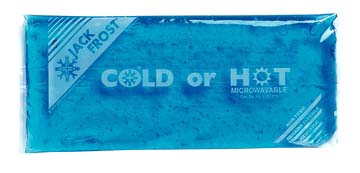Description
There is often confusion on what to use for injuries: hot packs or cold packs. Which of the two is best to use for the type of injury that you have?
In general, cold packs should be used during acute injuries. An acute injury means that it occurred suddenly or recently. A hot pack, on the other hand, can be used after swelling has subsided in the injured area. Also, hot packs are used in chronic or long-term cases of injury.
Let’s have a look at the basic concepts on how to apply hot and cold packs in the management of mild injuries.
As stated earlier, cold packs should be used during acute cases of mild injuries and not hot packs. In an acute injury, swelling and pain occur. The application of cold packs help to relieve pain and swelling.
To apply, wrap the cold pack in towel and put it over the injured area for no more than 20 minutes. Never apply the pack directly as this may cause frostbite or injure the normal tissues.
Cold pack application is commonly advised to be used during the acute phase of mild injury, usually within 48 to 72 hours after the injury. Examples of injuries where you can use cold packs are mild ankle sprains and muscle strains. Severe cases of sprains and strains require immediate medical attention.
People who have other health problems, such as diabetes, nerve problems and Raynaud’s disease, should consult their health care provider before using cold packs.
After 48 to 72 hours or after the swelling has subsided, hot packs can be used. This can help to relieve pain, reduce muscle spasm, and increase blood flow to the injured area for faster healing or repair. Also, the application of a hot pack on the injured joint-the area where bones meet-can reduce stiffness.
To apply, wrap the hot pack in towel and put it over the injured area for 15 to 20 minutes. Make sure to monitor the area from time to time during the application to prevent burn injuries. If the pack is too hot, try to add more layers of towel. Others may find relief by alternating hot and cold packs.
Hot packs should never be used during the acute phase of injury as this will cause more swelling and pain. It should only be applied if there is no more swelling.
Precaution should be observed when applying hot packs in people who have nerve problems or people who have problem sensing heat.
While the packs are applied, do not sleep. You may want to have someone check or time the application.
In conclusion, cold packs should be used in mild acute injuries and hot packs for chronic cases. As a rule, if there is swelling, use cold applications. Severe cases of injuries should be treated immediately by a health care professional.




